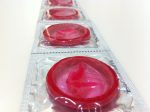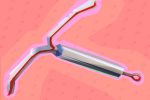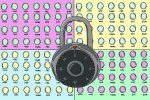It is the first day of your freshman year of college and you are equipped with everything you thought you needed after scouring every single “What to Bring to College” listicle you could find online. The one thing you are missing is birth control, or specifically, the Nexplanon implant, the most college student-friendly form of birth control.
Nexplanon is a small, thin contraceptive implant that is placed under the skin of the upper arm by a doctor or a nurse. The implant lasts up to three years and is 99% effective, making it just as efficient as a birth control pill or intrauterine device (IUD).
https://www.youtube.com/watch?v=n1nvo4Pb_3o
Although Nexplanon can be pretty pricey — it can cost over $900 for the implant and the placement — most medical insurances, like my own, cover the entire or a large fraction of the cost.
I decided to get the implant my freshman year of college. My mother wanted me to find a form of birth control that worked for me, even though I was not sexually active at the time, because I had tried taking the pill while I was in high school and failed miserably.
I forgot to take the pills all the time, making my periods extremely inconsistent and putting myself at the risk for pregnancy.
For many young adults, whether they are in college or not, life is hectic. Adulthood is new and exciting, but it also leads to stressful and difficult changes in many peoples’ lives.
Although birth control pills, such as Alesse and Levlen, can be a good option for many sexually active individuals, their effectiveness decreases after forgetting to take the pill just once.
Nexplanon is often compared to another popular form of birth control: the IUD, a T-shaped implant that is inserted into the uterus for long-term birth control. An IUD can last three to six years depending on the type. Some of the more common brands are Mirena, Skyla and Lilletta.
The insertion of an IUD can cause pain or cramping for some people who receive it. I was advised against getting it when I asked my doctor because they said that typically it was easier to insert into people who have already been sexually active or given birth.
Even with the IUD as an option, the Nexplanon implant has a lower failure rate than both hormonal and copper IUDs according to the Center for Disease Control.
I was pretty much sold after doing all my research, so I scheduled an appointment to have the Nexplanon implant inserted. Although I have had the implant in my arm for almost two years now, my experience with the insertion was uncomfortably unique.
The procedure only requires a small cut on the inner side of the upper arm, but the doctors numb the area beforehand, so most people do not feel anything besides the slight poke of the needle for the anesthesia. Most of my friends’ experiences, and the experiences of some who have shared theirs online, were pretty much painless, quick and easy.
I did not feel really any pain, only anxiety, as I turned my face away from the nurse cleaning the soft skin on my arm. Once the doctor injected the numbing agent into my arm, my anxiety built and I suddenly felt the same way I do when I have a panic attack.
I looked over as the doctor poked a small hole in my arm. I watched a little bit of blood spill out, but I could not feel the pain and that really freaked me out.
Some nurses tried to calm me down, helping me with breathing exercises and holding my hand. I tried to explain to them that it was not the pain but the loss of feeling in my arm that scared me, but I don’t think they understood at the time.
After resting on the paper-covered medical exam chair and looking down at my feet for what felt like a century, I began to calm down. A nurse followed me to the waiting room, where I filled out forms beside my friend. She was excitedly asking me questions about the procedure, but my head still felt feverish and strange.
We began to leave, waving goodbye to the women at the front desk when it all went dark.
I had passed out, but you don’t really know when you pass out, so I woke up groggy, thinking I would see my roommate’s face rather than three nurses looking down at me. They brought me water, and I regained strength soon afterward, but the situation surprised the nurses and doctors because fainting and panic attacks are not common side effects of the Nexplanon implant.
It might seem weird that I kept the implant after having such a bad reaction at first, but the implant itself has given me no problems since then, and it even stopped any bleeding from my period for two years. (There are many different side effects that Nexplanon can have on the regularity of your period. It changes from person to person, but I was lucky enough to have this effect.)
After discussing my experience with my mother, she reminded me that I had a similar experience when I had my wisdom teeth removed. I had a lot of anxiety that turned into a panic attack, which led me to jump up from the operating chair and try to run out of the room.
The similarity in both occurrences was the use of local anesthesia. I learned that my body reacted negatively with it, and it caused me to have panic attacks.
The one thing you should take away from my story is that you should know your body. Only you know how you will react when under the knife or while using a certain form of birth control. I would advise people who have had similar experiences with anesthesia to talk to their doctors before deciding on Nexplanon.
My anxiety and panic attack were not caused by the Nexplanon itself. The birth control’s actual side effects can be changes in mood, nausea, weight loss or gain, depression and (like I mentioned before) changes in your period. In extreme situations, it can also lead to an ectopic pregnancy.
Other than my anxious experience with the anesthesia, I love my Nexplanon. I forget I have it all the time, but when I need it, I know it’s there protecting me from just under the skin. I would advise people with uteruses to include Nexplanon in their list of things to bring to college, or the beginning of anything that plunges you into young adulthood.
















